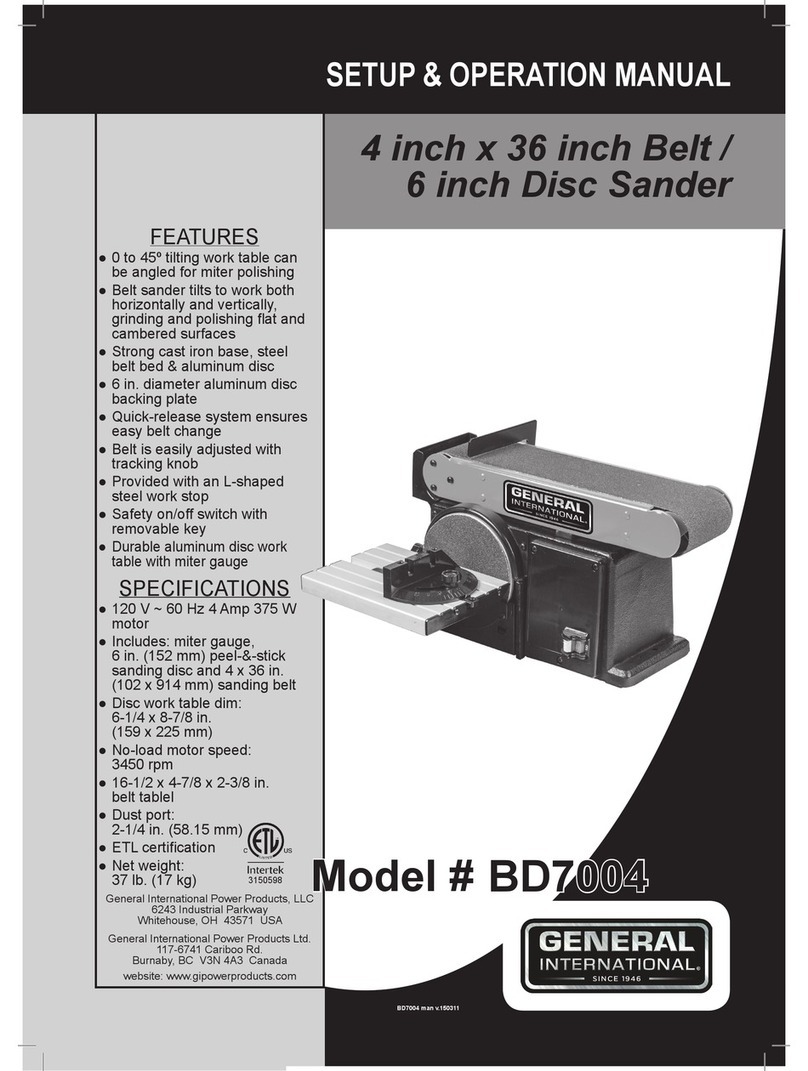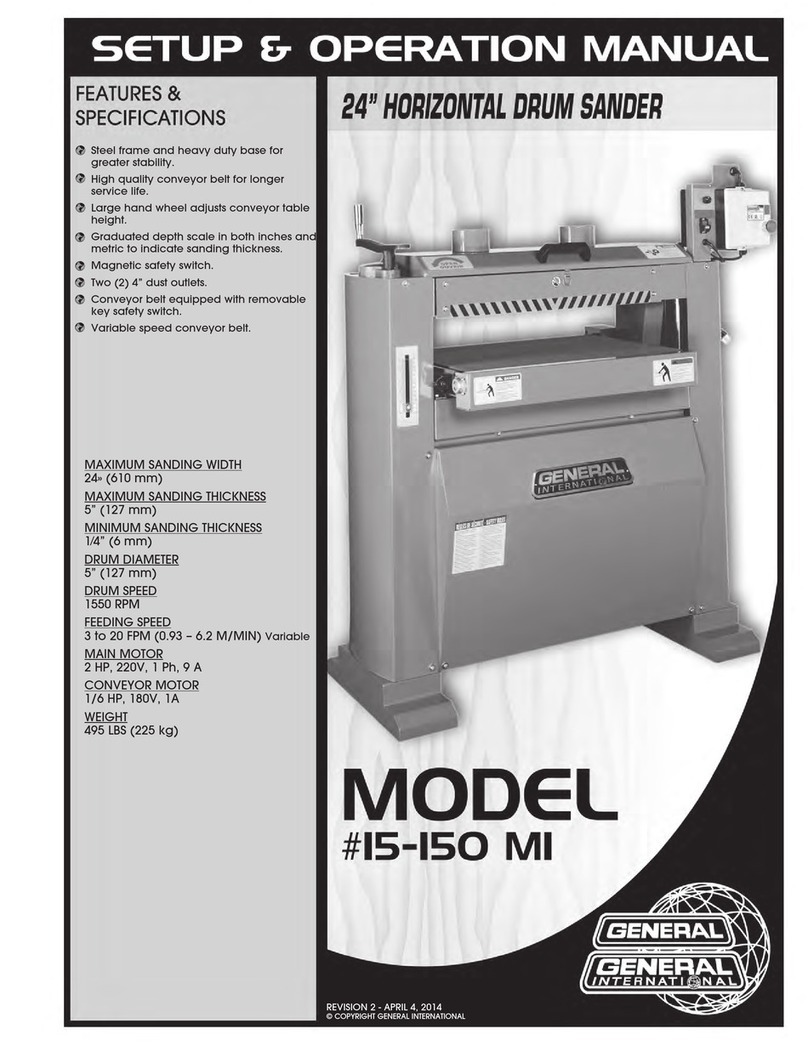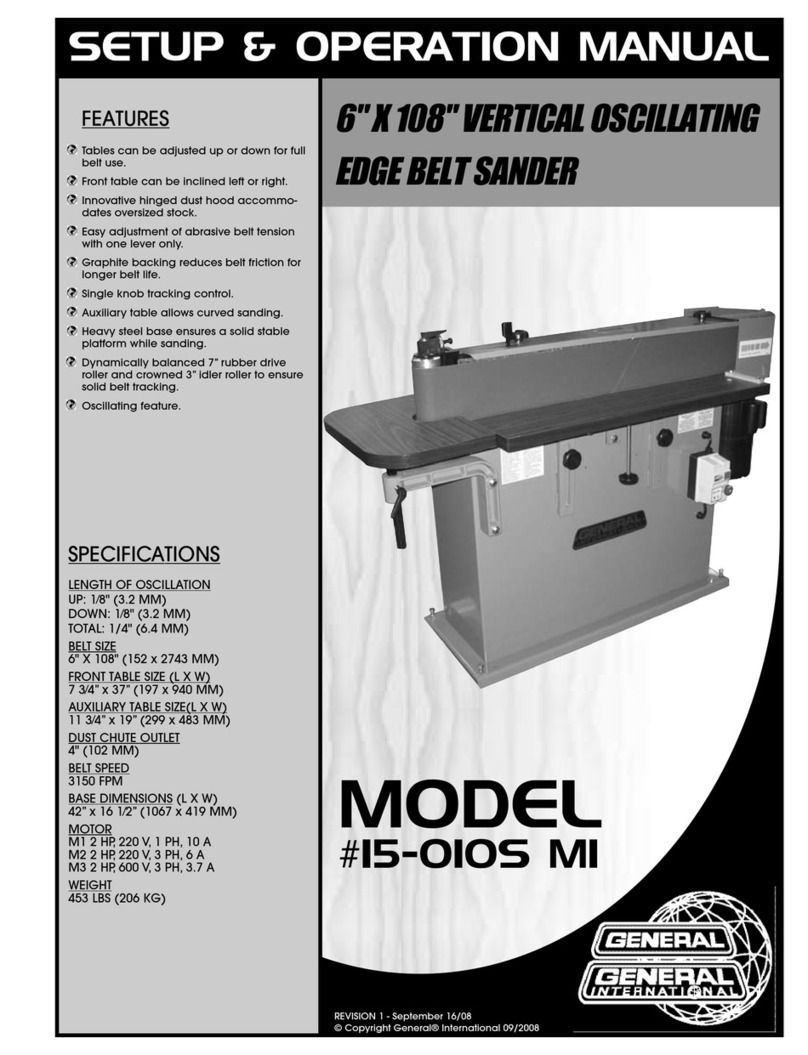RULES FOR SAFE OPERATION
To help ensure safe operation, please take a moment to learn the machine’s applications and limitations, as well as poten-
tial hazards. General® International disclaims any real or implied warranty and holds itself harmless for any injury that
may result from improper use of its equipment.
1. Do not operate the sander when tired, distracted,
or under the effects of drugs, alcohol or any medi-
cation that impairs reflexes or alertness.
2. The working area should be well lit, clean and free
of debris.
3. Keep children and visitors at a safe distance when
the sander is in operation; do not permit them to
operate the sander.
4. Childproof and tamper proof your shop and all
machinery with locks, master electrical switches
and switch keys, to prevent unauthorized or unsu-
pervised use.
5. Stay alert! Give your work your undivided atten-
tion. Even a momentary distraction can lead to seri-
ous injury.
6. Fine particulate dust is a carcinogen that can be
hazardous to health. Work in a well-ventilated area
and wear eye, ear and respiratory protection
devices.
7. Do not operate this sander without an ade-
quate dust collection system properly installed and
running. Operating this sander without adequate
dust collection can lead to equipment malfunction
or dangerous situations for the operator or other
individuals in the workshop.
8. Do not wear loose clothing, gloves, bracelets, neck-
laces or other jewelry while the sander is in opera-
tion. Wear protective hair covering to contain long
hair and wear non-slip footwear.
9. Be sure that adjusting wrenches, tools, drinks and
other clutter are removed from the machine and/or
the feed table surface before operating.
10. Keep hands well away from the sanding belts and
all moving parts. Use a brush, not hands, to clear
away sanding dust.
11. Be sure sanding belts are securely installed on the
sanding drums.
12. Do not operate the sander if the sanding belts are
damaged or badly worn.
13. Do not push or force the workpiece into the sander.
The machine will perform better and more safely
when working at the feed rate for which it was
designed.
14. Avoid working from awkward or off balance posi-
tions. Do not overreach and keep both feet on floor.
15. To minimize risk of injury in the event of workpiece
kickback, never stand directly in-line with the sand-
ing belt or in the potential kickback path of the
work piece.
16. Keep guards in place and in working order. If a
guard must be removed for maintenance or clea-
ning, be sure it is properly re-attached before using
the tool again.
17. Never leave the machine unattended while it is run-
ning or with the power on.
18. Use of parts and accessories NOT recommended
by
GENERAL®INTERNATIONAL
may result in equip-
ment malfunction or risk of injury.
19. Never stand on the machine. Serious injury could
occur if the sander is tipped over or if the sanding
belt is unintentionally contacted.
20. Always disconnect the tool from the power source
before servicing, changing accessories or sanding
belts, or before performing any maintenance or
cleaning, or if the machine will be left unattended.
21. Make sure that switch is in “OFF” position before
plugging in the power cord.
22. Make sure the tool is properly grounded. If equip-
ped with a 3-prong plug it should be used with a
three-pole receptacle. Never remove the third
prong.
23. Do not use the sander for other than its inten-
ded use. If used for other purposes,
GENERAL®INTER
NATIONAL
disclaims any real implied warranty and
holds itself harmless for any injury, which may result
from that use.
5

































